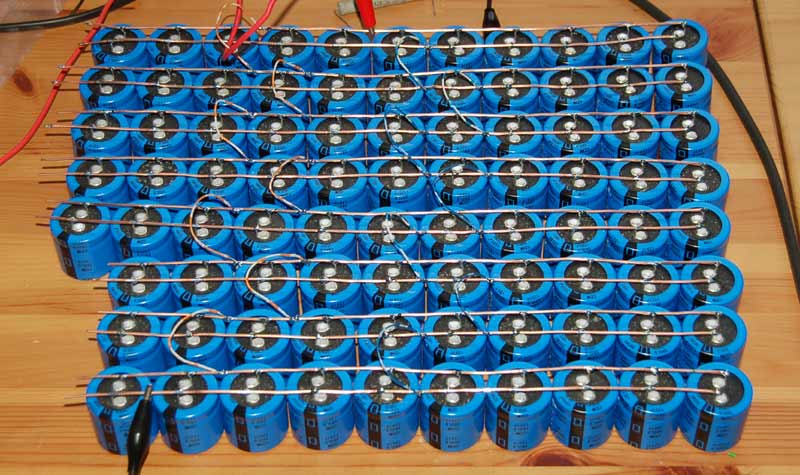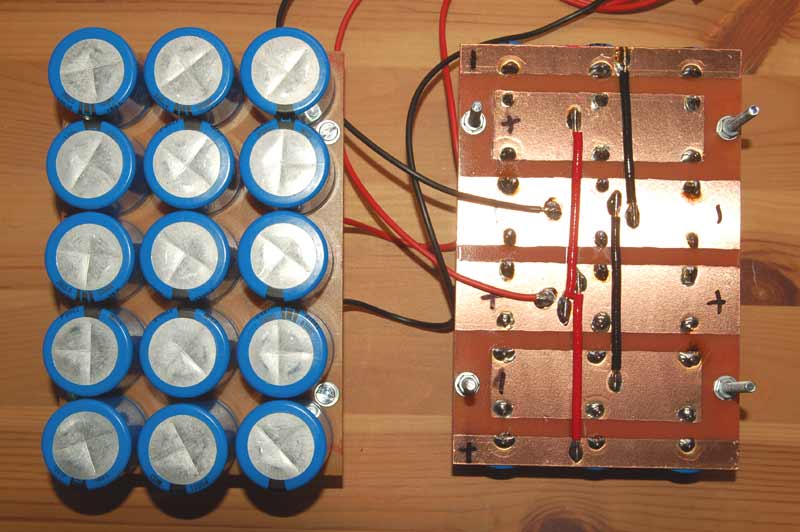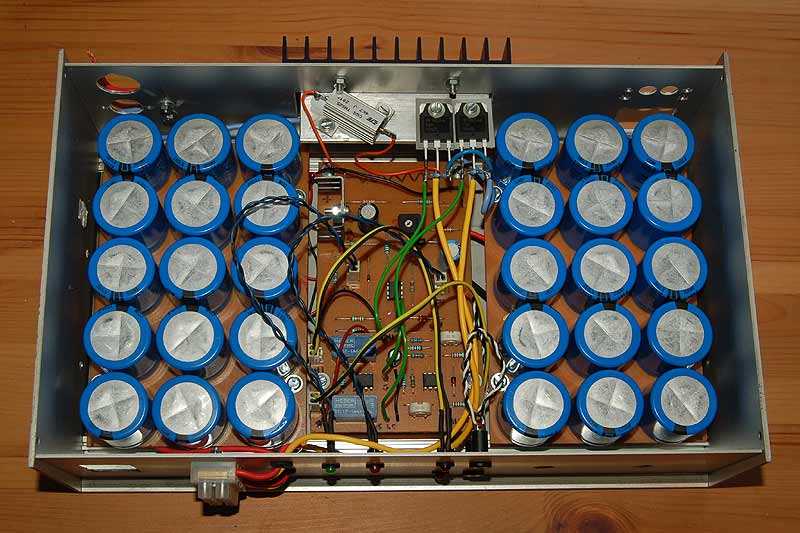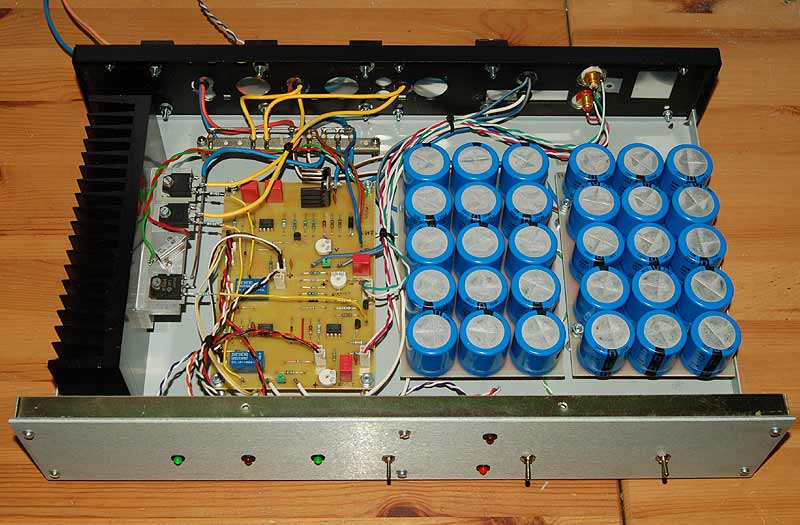Heating Water Using Solar Panels

By Andrew Westcott
-- Links to other pages I've written --
Home Page
Amateur Radio
Concert Master
Coxparo
Gin Traps
Grimspound
Rust Electrolysis
National Explosives
Solar Hot Water
Wistmans Wood
Doddi Mines
Rants
Dog Walker
Zombies!
JS Email
Telephone Intercom
Whetstone Mining
The Nature Of The Quest
I wanted to heat my water by using solar photovoltaic panels to power the immersion heater, but without the expense and complication of buying one of those dodgy foreign-made inverters. Some may argue that it would be better to use solar thermal panels to heat the water, but this requires additional plumbing, a pump to circulate the water and I'm not convinced it's any more efficient. What I've developed here is a very simple system needing no changes to the existing plumbing and no expensive electronics and software. The simplicity and therefore cheapness of this design are its primary features.
Initial Ponderings
My initial idea was to connect the solar panels directly to the immersion heater, bypassing the considerable expense and complication of the usual electronics. Once I researched and understood the characteristics of solar panels and started doing some calculations, I realised that a direct connection to the immersion heater wasn't going to heat the water significantly in anything other than full sunlight.
The reason for this is the way solar cells operate: once sufficiently illuminated, the output voltage remains fairly constant irrespective of how bright the sun is. The output current, is, however, highly dependent on illumination, ranging from next to nothing in poor lighting to the maximum rated output in strong direct sunlight. This apparent current limiting impacts power delivery severely, and if an attempt is made to feed the power into a fixed load resistance such as an immersion heater, efficiency will be poor at lower light levels.
I can demonstrate this effect using a bit of maths: take, for example, a situation where the solar panel array is in relatively low light, and can only produce 1 amp of current. If this were connected directly to an immersion heater with a typical resistance of 20 ohms, Ohm's Law dictates that the 1 amp of current available would only develop a voltage of 20 volts across the load, developing a pitiful 20 watts of heating. (Power = volts x amps.) However, the solar panels could be capable of producing that 1 amp at a voltage of, say, 140 volts if the load were better matched, meaning that under optimum loading conditions, 140 watts would be available to heat the water. (140 volts x 1 amp) As can be seen, mismatching the load represents a significant loss of efficiency under poorer lighting conditions, which is exactly when you'd want to squeeze every bit of power from those panels.
The table below shows the effect of the load mismatch, based on a typical immersion heater resistance of 20 ohms. (Changes in voltage with illumination have been ignored for simplicity.)
| 4 panels in series giving 140v at the optimum power point |
| Current available | Power available | Power into heater | Efficiency |
| 0.5A | 70W | 5W | 7.1% |
| 1.0A | 140W | 20W | 14.2% |
| 2.0A | 280W | 80W | 28.5% |
| 3.0A | 420W | 180W | 42.8% |
| 4.0A | 560W | 320W | 57.1% |
| 5.0A | 700W | 500W | 71.4% |
| 6.0A | 840W | 720W | 85.7% |
| 7.0A | 980W | 980W | 100% |
So What Can Be Done About This?
The established way to deal with this is to use some commercial product such as an inverter with maximum power tracking software to power the immersion heater. This is expensive, complex and in this instance, unnecessary.
One way we could make use of whatever power the solar panels can generate would be to have a variable load resistance, chosen to best match the output of the panel at a particular moment. This would suggest the 20 ohm load for bright sunlight, rising as the light weakened, to around 140 ohms when the panels can only supply 1 amp of current.
Evidently this is impractical when using immersion heaters, although having an option to wire multiple heaters in series would improve power transfer somewhat under less than ideal lighting conditions. This is not an elegant solution and would require control circuitry to do the switching, quite apart from the unliklihood of physically fitting several heaters into a tank.
Introducing Andy's PowerDump Technology
OK kids, you can stop sniggering at the name now, this is a really neat, cheap and simple solution.
It is known that for efficient power transfer, we need to be operating the panels close to their maximum power voltage.
So imagine this for a moment:
You have your solar panels connected to an enormous bank of capacitors, a voltmeter monitors the voltage across the capacitor bank, and a switch connects the capacitors to the immersion heater. You know the optimum voltage to run the panels at, as it's given in the specifications.
Initially the switch is off and the voltage rises due to the capacitors being charged from the panels. When the voltage climbs to just above the peak power voltage, you operate the switch, dumping power from the capacitors into the immersion heater. You watch the voltage as it falls, and when it has fallen to just below the peak power voltage, you open the switch, allowing the capacitors to charge up once again, until the voltage again rises to just above optimum voltage, whereupon you switch on the switch again, and so-on for ever. Lower light levels simply mean the capacitors take longer to charge, but whatever power is available is harvested, stored and eventually dumped into the water.
This would indeed work. There are a couple of problems with this idea: getting a capacitor bank large enough to make the switching requirement slow enough to perform, and finding someone daft enough to stand there all day watching a meter and operating a switch.
Luckily, electronics can come to our aid.
The capacitor bank can now be reduced to a sensible size as switching frequency is no longer a major concern, the meter-watching can be done by a comparator with some hysteresis thrown in to produce the upper and lower limits of the 'dumping window', and the switching can be done by a MOSFET. Beautifully simple, using nothing more than basic electronics with not a line of code in sight, and costing less than fifty quid including a case.
Real World Solar Panels: Voltage Variations
Unfortunately, things are rarely as straight-forward as we'd like them to be, and solar panels are no different. Here are some real-world solar panel specifications courtesy of Bimble Solar
| Power Output (Pmax) | 295 watts |
| Voltage at Pmax (Vmpp) | 30.93 volts |
| Current at Pmax (Impp) | 9.54 amps |
| Open-Circuit Voltage (Voc) | 37.18 volts |
| Short-circuit current (Isc) | 10.08 amps |
| Temp. Coefficient Pmax | - 0.4 % per degree |
| Temp. Coefficient Voc | - 0.3 % per degree |
It's mainly the temperature coefficient that'll mess us around here, as this causes the panel's voltage to change with temperature. This voltage change can be calculated using basic arithmetic, using the data from the specifications.
At 25°C, (the standard measuring temperature) five of these panels in series would produce around 154 volts at the maximum power point and an open circuit voltage of around 186 volts.
At 10°C, which is more typical of UK Winter temperatures, things change a bit, producing around 164 volts at maximum power, and an open circuit voltage of around 194 volts.
At 40°C however, things go the other way with only around 145 volts at maximum power, and an open circuit voltage of around 178 volts.
As can be seen, as the panel temperature increases, the output voltage of the panel decreases. It would be best to adjust the default power dumping window for a 10°C ambient temperature or less to maximise what can be harvested in the Winter months, and to have the option to shift the window down about 20 - 25 volts during very hot weather to improve power transfer. A simple front-panel switch labelled 'normal' and 'low' would be an elegant solution to this, and simple to include in the voltage monitoring circuitry.
This same window-shifting option would also allow the PowerDump module to trigger under heavily overcast conditions, when the voltage generated by the panels could well be below the normal trigger threshold. Although the current available under these conditions would be pitiful, it would still be better than nothing.
Design Thoughts For The PowerDump Prototype
I decided that an array of 5 panels similar to that featured above wired in series would be suitable, requiring capacitors of a 200 volt rating, above the maximum they would be likely to receive even in cold weather. Too small a capacitance would lead to a high switching frequency, which if too fast could lead to heating losses in the capacitors and the MOSFET, so a decent amount of capacitance would be preferable to slow things down, with the benefit of sharing the discharge current between many capacitors.

A nice collection of 1200µF 200v capacitors being prepared for PowerDump duty
30 of the capacitors as pictured above wired in parallel will give somewhat over 30,000µF of capacitance, suggesting a power dump duration of around 60 - 70 milliseconds or so into a 20 ohm load, nicely relaxed, although the system would work fine with far fewer. I also intended to have an LED indication of when a dump was taking place, and at this duration, it would be easily visible.
The power for the switching and monitoring circuit would be taken from the panel supply making it completely solar-powered. The high voltage on the capacitors can be reduced to 24 volts using, say, a 5.6K resistor in series with a 24v Zener diode, the output of this feeding a 7812 regulator to provide a stable 12 volts to the main circuitry.
For sensing the voltage accumulated on the capacitor bank, half an LM393 dual comparator could be used, with a voltage reference connected to the -ve input. A resistor chain connected across the capacitor bank can sense a fraction of the stored voltage and input this to the +ve input, comparing that to the reference, with a resistor connected between output and the +ve input to provide the required degree of hysteresis.
The output of the comparator takes the form of a current sink, and when on, this would sink current passing through the MOSFET's gate feed resistor, pulling the gate to 0 volts, holding it in the cut-off condition. As the voltage sensed at the comparator's -ve input rises above the reference voltage, the comparator's output would switch off, allowing the full 12 volts to appear at the gate of the MOSFET via its gate resistor, turning it on resulting in a power dump into the immersion heater, until such time as the voltage across the capacitor bank dropped sufficiently to turn on the output of the comparator, once again shutting down the MOSFET.
Experimenting With The Prototype
Now I had the idea for the circuit worked out in my head, it was time to slap some components together to test my theory and calculations. My favourite way to do this for simpler circuits like this is to construct a working circuit birds-nest style on the bench, and while it looks untidy, it is very easy to change values to get things working the way I want them.

Initial circuit testing, birds-nest style
To test and adjust the operation of the circuit I used an isolating variac feeding a bridge rectifier and capacitor to mimic the output of the solar panels, which allowed me to finalise the resistor values in the divider chain and to set the hysteresis to give roughly a 10 volt switching window. A preset potentiometer was included to allow the window to be shifted up or down in voltage to enable a range of panel specifications to be accommodated.
The second comparator in the package is used to provide an indication of what the circuit is doing, by illuminating a green LED while the capacitors are charging and a red LED when the circuit is dumping the charge into the water heater. This is done simply by borrowing the voltage reference and comparing this to the main comparator's output voltage. On test, the whole circuit works very well, so it's now time to do a bit of component refining and to get physical with the prototype.
Building The PowerDump Prototype
The first job I wanted to tackle was mounting the capacitors. I happened to have some pieces of copper-clad board just large enough to mount 15 capacitors, arranged in 3 rows of 5, so I decided to construct 2 such boards of 15 capacitors which would fit into the case I had chosen. Unfortunately not glassfibre laminate, but keeping creep distances in mind this would suffice for the prototype.

Capacitor bank constructed and ready to test
Fast-forwarding a fair bit, I designed, drilled, etched and built a circuit board for the PowerDump controller, and then as so often happens with me, I decided on some additional features I felt would be useful, which had to be retro-fitted.
The plan would be to use an Economy 7 hot water tank which I already have, which features an upper and a lower immersion heater. I felt that prioritising heating the water in the small topmost part of the tank would be useful especially if direct sunlight was in short supply, so at least there would be a hope of some warm water.
Once the sensor by the top heater indicates the tank is up to temperature (perhaps 50°C), the unit then diverts power to the lower heater to begin heating the remaining main body of water.
A sensor fitted at the lower heater location allows the unit to cease heating once the entire tank has heated up to its target temperature (perhaps 75°C), to prevent the water getting excessively hot or boiling during prolonged sunshine.
This additional sensing and diverting circuitry was built on a second board, comprising 2 comparators for the 2 heat sensors, and 2 more comparators driving a pair of reed relays to divert the gate voltage to one of two MOSFETs depending on which immersion heater required power at that time.

Completed PowerDump Mk1 prototype, tested and ready for service
Above is the completed PowerDump Mk1 prototype. The 30 capacitors are the most obvious feature, but between them can be seen the 2 circuit boards, the larger rear one being the PowerDump controller itself, and the smaller nearer one being the heat sensor and diverting circuitry which was added later to the unit, with its 2 blue reed relays nicely visible. At the rear of the case can be seen the dropper resistor mounted on a heatsink, along with the 2 power MOSFETS. This degree of heatsinking is unnecessary, but as the heatsink was fitted to the case I used it anyway. The front panel has LED indication of charging, dumping, and which heater is currently active, and there are connector blocks for solar input at the rear, and for the 2 heaters on the front. Also on the front are 3.5mm jack sockets to allow the heat sensing thermistors to be plugged in.

The PowerDump Mk2 on the bench being tested
"Diese maschine is nicht für gefingerpoken und mittengrabben. Es ist easy schnappen der springenwerk, blowenfusen und corkenpoppen mit spitzensparken. Ist nicht für gewerken by das dummkopfen. Das rubbernecken sightseeren keepen hands in das pockets und vatch die blinkenlights."
Above is the Mk2 version, fitted into a hearing loop amplifier case, again using an over-sized heatsink because it was already fitted.
This version includes several circuit refinements: now all the electronics are on one board; component changes have been made to improve efficiency, meaning the unit only requires about 23mA to function; the use of voltage references rather than the less stable Zener diodes; glassfibre laminate circuit boards; a switch to disable heating, another switch to choose between 'auto' immersion heater selection or bottom immersion heater only, and a third switch to allow the dumping window to be shifted downwards to compensate for hot or overcast weather voltage reduction.
A useful change was including the facility onboard to allow conventional immersion heater thermostats to be used for temperature sensing, rather than the thermistor ones originally intended; during initial development, I became a bit obsessed with thermistor sensing and forgot about using the conventional thermostats. A third MOSFET is fitted which is activated when heating is complete or disabled, allowing connection to another device, such as a battery charger under these conditions, although for the moment it has no connections to the rear panel.
This is the state of play at the moment: I have managed to purchase 5 second-hand solar panels and in the near future plan to get them fitted to the side of my garage. The PowerDump unit is located and the wires routed ready to be deployed, so I should soon be able to do some real testing under real sunlight and get more data on the power available under different lighting conditions. The results of my findings, whether exciting or depressing will be published here.
Back to top
I can be contacted at this address:
Copyright © Andrew Westcott 2003 - 2025
I'm happy for anyone to use this material for private, non-commercial or educational purposes, but credit to the author must be given. For any other use please contact me for permission.